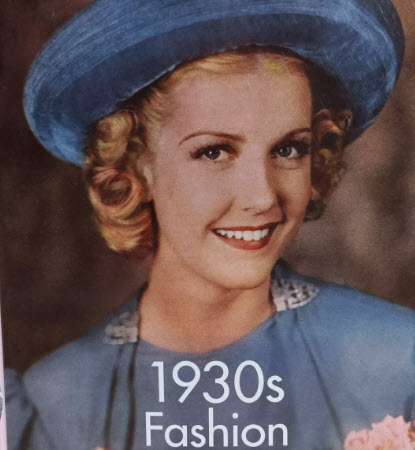Chapter Two

The 1930s were a time of economic hardship and uncertainty in the United Kingdom, as the country grappled with the effects of the Great Depression.
This era of austerity had a profound impact on fashion, leading to a shift towards more practical and understated clothing styles. Despite the challenging economic conditions, fashion remained an important form of self-expression for many people, reflecting the social and cultural changes of the time.
During the 1930s, the prevailing fashion silhouette was slim and streamlined, with an emphasis on simplicity and elegance. Women’s clothing featured tailored suits with padded shoulders and nipped-in waists, while skirts were typically calf-length and pencil-thin. Day dresses were often made from inexpensive fabrics such as rayon or cotton, with minimal embellishments and detailing. Eveningwear, on the other hand, was more glamorous and sophisticated, with bias-cut gowns and luxurious fabrics like silk and velvet.
One of the key influences on fashion in the 1930s was the rise of Hollywood glamour.
Actresses like Greta Garbo and Marlene Dietrich epitomized the elegance and sophistication of the era, influencing trends in both clothing and beauty. The allure of the silver screen translated into a desire for luxury and escapism in fashion, with women embracing bias-cut gowns, fur stoles, and sparkling accessories.
However, the economic constraints of the Great Depression meant that not everyone could afford to indulge in such extravagance. Thriftiness and resourcefulness became essential virtues in 1930s fashion, leading to the popularity of DIY sewing patterns and clothing alterations. Women became adept at making do with what they had, repurposing old garments and accessories to create new looks. This ethos of thriftiness gave rise to a distinctive style known as “Great Depression Chic.”
“Great Depression Chic” was characterized by its emphasis on subtlety and restraint, as well as its clever use of inexpensive materials. Rather than flashy or ostentatious designs, this style prioritized simple lines and minimal decoration, reflecting the practicality and austerity of the times. A muted color palette of browns, grays, and earth tones was favored, evoking a sense of quiet sophistication and elegance.


Accessories played a crucial role in achieving the understated glamour of fashion.
Women often relied on statement hats, gloves, and jewellery to elevate their outfits, adding a touch of refinement and polish. Scarves and belts were also popular accessories, offering a subtle way to inject personality and flair into an otherwise subdued ensemble.
The influence of menswear on women’s fashion was another prominent trend of the 1930s, reflecting the changing roles and attitudes towards gender during this period.
Tailored suits, waistcoats, and wide-leg trousers became fashionable choices for women, blurring the lines between traditional masculine and feminine attire.
This androgynous style challenged conventional notions of femininity, signalling a shift towards more progressive and inclusive fashion ideals.
Despite the challenges of the Great Depression, the 1930s were a time of creativity and innovation in fashion. The constraints of economic hardship inspired new approaches to style, leading to the emergence of “Great Depression Chic” as a distinctive and influential trend.
By embracing thrift and subtlety, women in the UK during this period managed to navigate the uncertainties of the era with grace and sophistication, leaving behind a legacy of timeless elegance and resilience in their sartorial choices.